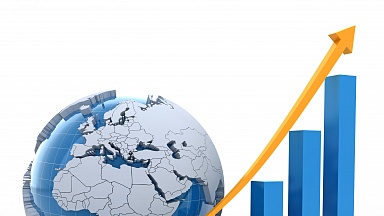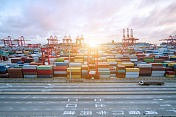The article by Sapir and Vasilchenko in Russia in Global Affairs journal documents the phenomenon of slowbalisation, which represents a structural shift in the global economic system, where conventional globalisation gives way to a slower and more selective economic convergence. The authors argue that slowbalisation does not mean a fallback to protectionism or total de-globalisation, but is about re-prioritisation where sustainability, localisation of production, digitalisation and supply chain safety are more important than maximising international trade figures.
The authors explore the way global landscape transformations affect key economies. The United States is taking steps towards achieving «reindustrialisation» and strategic autonomy, as it focuses on developing high-tech industries and protecting critical infrastructure. Policies seeking to localise the production (in particular, semiconductors) reflect a push to reduce dependence on China and other potentially unstable suppliers. Concurrently, Washington is ratcheting up its political and economic clout in key regions around the world in an effort to preserve its leadership in the face of exacerbating competition with China.
In turn, China is adapting to the newly available global flow structure, as it keeps increasing traditional goods exports and exports of digital solutions. The Belt and Road Initiative is on track to become a strategic tool that Beijing will leverage to build the logistics and economic infrastructure to its own standards, thus offering an alternative to the Western globalisation model.
The article places special emphasis on India, which seeks to fill the newly vacated niches in global value chains. The Indian economy relies on intellectual labour exports ranging from IT services to financial and legal transactions thus creating its own model for becoming part of the global economy.
Traditionally focused on industrial exports, Germany and Japan are facing challenges where they are forced to revise established supply chains and to adjust to the mounting geopolitical risks and energy constraints. Germany, in particular, is plagued by high dependence on external sources of energy and raw materials, which undermines its industrial resilience. Japan is also facing the challenge of strengthening the domestic manufacturing industry and digitalising its economy.
Mexico and Brazil are on the opposite sides of the spectrum. Mexico, a southern neighbour of the United States, could benefit from the drive to relocate manufacturing facilities, but is held back by weak infrastructure and institutional challenges. Brazil, in turn, continues to play an important role in agricultural exports, but its role in the technology chains remains limited.
The authors make a point that competitiveness criteria are changing in the slowbalisation era. The players, who can quickly adapt to an unstable environment, diversify their supply, use digital technologies, and build strategic partnerships, will be on the top. The digitalisation of trade and the transformation of logistics have become key success factors. Services, data and intellectual assets increasingly determine the structure of international trade, which is particularly relevant in the context of regionalisation, where sustainable cooperation platforms are emerging within regions, often without global intermediaries.



